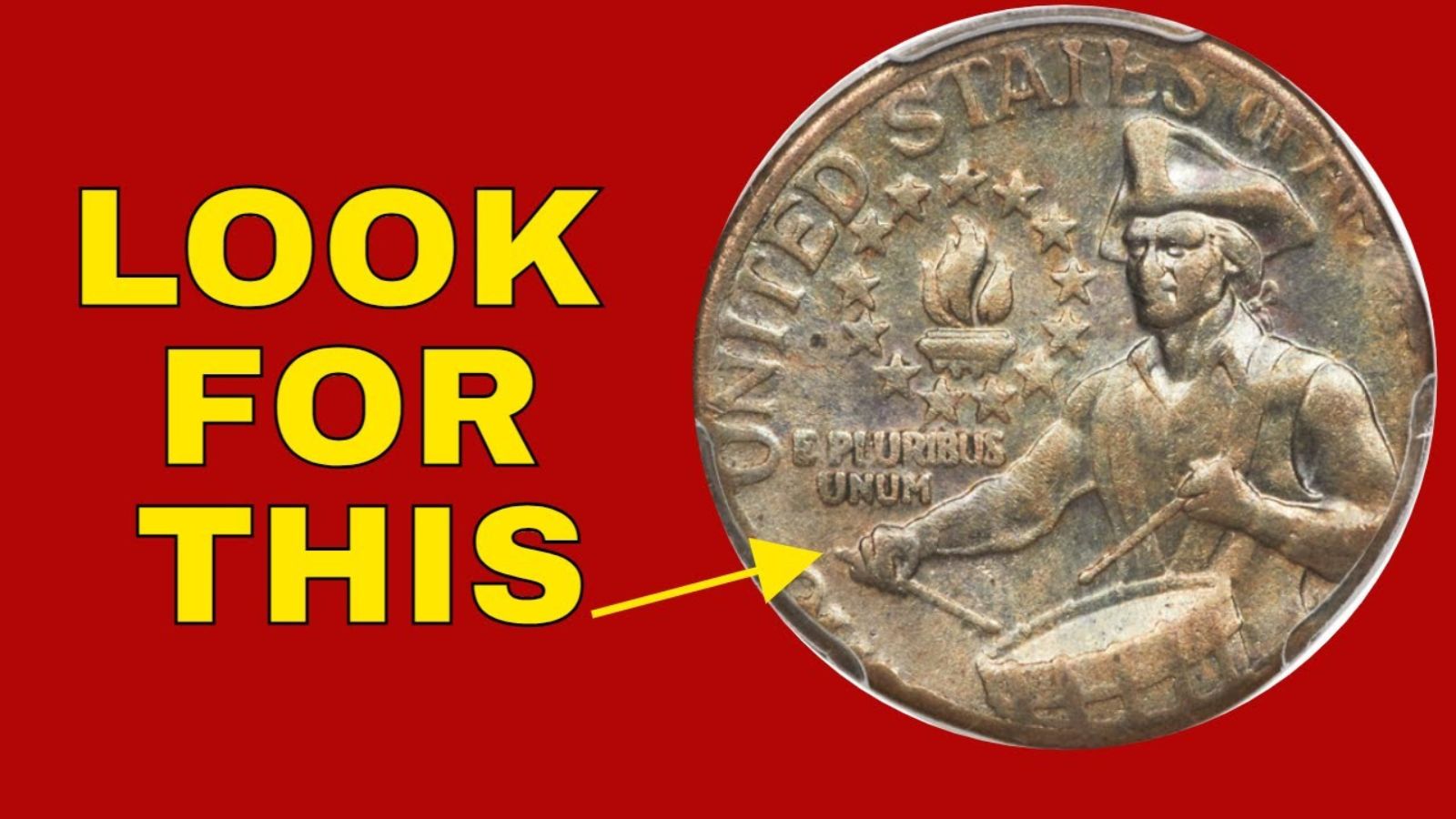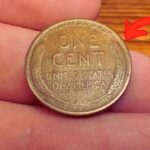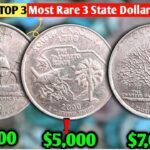When most of us think of a quarter, we simply see it as a piece of loose change—25 cents used for a vending machine, parking meter, or to complete a quick cash transaction. But what if one of those unassuming quarters tucked away in your pocket or coin jar was secretly worth $2.5 billion? It might sound like a wild story, but that’s the mystery that surrounds a particular Rare Bicentennial Quarter—a coin believed by some collectors and numismatists to be so rare, it could fetch a fortune unlike anything we’ve ever seen in the coin-collecting world.
In this detailed guide, we’ll explore what makes the Rare Bicentennial Quarter so unique, why it might carry such astronomical value, and how you might already be in possession of one without even realizing it.
Top 4 Most Valuable 1976 Bicentennial Quarter Valued at $97 Million, Still in Circulation
What Is the Bicentennial Quarter?
The Bicentennial Quarter was released in 1976 to commemorate the 200th anniversary of the United States’ independence. This coin stands out from the standard quarters due to its celebratory reverse design. Instead of the traditional eagle, the back of the Bicentennial Quarter features a colonial drummer boy and a torch encircled by thirteen stars—representing the original colonies.
Another distinguishing characteristic is the dual date inscribed on the obverse: 1776–1976. This was done to honor the bicentennial milestone. The obverse still retains the familiar portrait of George Washington, but the reverse design makes the coin easily identifiable.
While millions of Bicentennial Quarters were minted—over 1.6 billion to be exact—not all of them are created equal. Among these, a mysterious and Rare Bicentennial Quarter has captured the attention of collectors worldwide for its supposed value of up to $2.5 billion.
Why Would a Quarter Be Worth $2.5 Billion?
It may seem implausible, but the estimated $2.5 billion value is based on the idea that a prototype, test version, or mint error Rare Bicentennial Quarter was created under unique circumstances and possibly escaped into circulation. Here are some reasons why such a coin could command such a colossal price:
- Prototype or Test Strike: Some quarters may have been produced as early test versions before the official launch. These coins could have used unique materials or different design engravings.
- Unusual Metal Composition: There are rumors that a few Bicentennial Quarters were struck using high-purity silver, or even gold, which would drastically increase their value.
- Extreme Rarity: If only one or two examples of this coin exist, rarity alone could drive the price into the stratosphere.
- Minting Error or Anomaly: Coins struck off-center, with double dies, or with misaligned elements are considered errors and can be highly valuable.
- Mystery and Myth: The lack of verified images and public confirmation fuels speculation, mystery, and demand.
If authenticated, this one-of-a-kind or extremely limited coin could easily draw bids worth hundreds of millions—or even billions—at a high-stakes auction.
Could You Have a Rare Bicentennial Quarter?
The most compelling aspect of this story is that this Rare Bicentennial Quarter could still be in circulation. Unlike known rarities locked away in private vaults or museums, this elusive coin might be sitting in someone’s change jar, wallet, or desk drawer.
Before you dismiss the possibility, consider the countless stories of rare coins discovered by accident: family heirlooms tucked away for generations, pocket change finds, or estate sale treasures.
So how can you spot this elusive quarter? Here’s what you should look for:
- Unusual Shine or Color: A Rare Bicentennial Quarter may look different—perhaps shinier or with a gold or silver hue.
- Weight Variations: Use a precise scale. Standard quarters weigh about 5.67 grams. Significant deviations may indicate unusual materials.
- Design Flaws: Look for double-strikes, off-center images, or shifted inscriptions.
- Mint Mark Oddities: Check for missing or misplaced mint marks, which may suggest a prototype or mint error.
- Non-Magnetic Material: Use a magnet. Most quarters are not magnetic, but unusual responses may signal an error coin.
What to Do If You Suspect You Have the Rare Coin
If you come across a Bicentennial Quarter that seems different, your first instinct might be to clean it or show it off. Don’t. Cleaning a coin can reduce its value drastically. Here’s a step-by-step guide to handling your potential jackpot:
- Do Not Clean the Coin: Preserve it in its original state.
- Use a Soft Container: Store it in a coin flip or padded envelope to avoid scratches.
- Weigh and Measure: Check the weight and dimensions against a standard quarter.
- Photograph It: Take clear, close-up images of both sides.
- Consult a Professional: Reach out to a certified coin grading service like PCGS or NGC.
- Get an Appraisal: A reputable coin dealer or numismatist can provide a professional opinion.
Other Rare Bicentennial Quarters Worth Noting
While the rumored $2.5 billion coin steals the spotlight, there are other known Rare Bicentennial Quarter variants that can fetch significant sums:
- Silver Proof Quarters: Issued as part of collector sets, these coins are made of 40% silver and can be worth up to $10–$15 depending on condition.
- 1976-S No Mint Mark Proofs: These are proof coins struck at the San Francisco Mint that were released without a mint mark. Their scarcity adds value.
- Double Die Errors: Coins with doubled letters or numbers, especially in the “IN GOD WE TRUST” or the date.
- Off-Center Strikes: Coins where the design is visibly misaligned can be highly valuable, particularly if the date is still visible.
These versions may not be billion-dollar coins, but they still represent lucrative finds for collectors.
FAQs – Rare Bicentennial Quarter
1. Is there really a Bicentennial Quarter worth $2.5 billion?
There are strong rumors and speculation among collectors about a Rare Bicentennial Quarter that may be a prototype or mint error, potentially worth up to $2.5 billion if proven authentic.
2. What makes the Rare Bicentennial Quarter so special?
It’s believed to have been made with unusual materials or struck under unique circumstances. Its one-of-a-kind nature and extreme rarity contribute to its legendary value.
3. Can I find one in circulation?
It’s unlikely but not impossible. Many rare coins have been discovered in everyday change or inherited collections.
4. Should I clean a coin before selling it?
No. Cleaning can damage a coin and significantly reduce its value. Always have it appraised in its natural condition.
5. How do I get my coin professionally checked?
Contact certified grading services like PCGS or NGC, or visit a reputable coin dealer or coin show for expert evaluation.
Final Thoughts
The idea of a Rare Bicentennial Quarter being worth $2.5 billion sounds like a fantasy, but the world of numismatics has taught us time and again that extraordinary discoveries are possible. Whether or not the $2.5 billion version exists, the story has reignited interest in one of America’s most iconic coins.
So next time you receive change at a store, or dig through an old family coin jar, take a second look. That familiar 1776–1976 quarter might just be more than spare change—it could be the key to a life-changing discovery.
Some Important Link
| Download News APP | Click Here |
| WhatsApp Group | Click Here |
| Home Page | Click Here |










